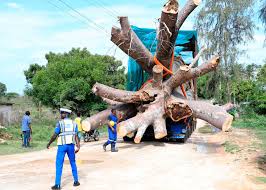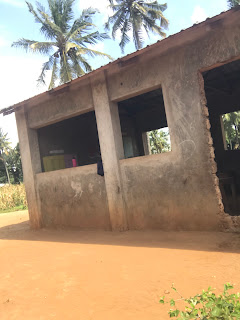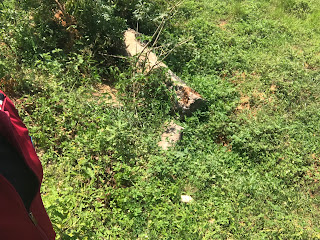
Do you remember the controversial story of baobab exportation from Kilifi to Shekvetili Dendrological Park Ltd in Ureki, Ozurgeti Municipality, Georgia? Let me take you through it. https://www.dw.com/en/kenya-africas-tree-of-life-faces-multiple-threats/video-68201020
In 2022, a multimillion-dollar company approached the residents of Tenzo Mabuyuni, a village in Kilifi County, Kenya. They expressed interest in buying mature baobab trees, which some claimed to be older than “Jesus.” After surveying the village, they identified and uprooted eight fully-grown baobabs. This trade was not easy. It required numerous certifications. After a push-and-pull that reached the highest office in the land. A court order that was issued halt the exportation but later canceled. Despite local community leaders voicing countless reasons against exporting their heritage. The eight trees were escorted by uniformed police from Tenzo to BOFA, a mini harbor that served as a storage and treatment facility for the baobabs. The next day, residents were shocked to see the trees they revered being loaded onto ships and ferried through the Indian Ocean to Georgia for a newly constructed botanical garden.

Harvesting the first Baobab tree in Tenzo Mabuyuni a village in the Coastal region Kenya in 2022
Today, we revisited Mabuyuni village in Tenzo to follow up and understand how the community is faring after being coerced into selling the baobabs. Instead of the bright faces I met while making a documentary just after they had sold the baobabs last year with DW, an international television channel, we encountered faces of regret and sorrow. Over 400 students, aged 5 to 15, were visibly hungry. We became interested in understanding the entire situation. The person who could explain the story in depth was the Village Elder. When we asked for Mzee wa Nyumba Kumi (the village elder), his daughter, who was selling mahamri (one piece for 5 Ksh), informed us he wasn’t available.
The youngest daughter of Mzee wa Nyumba Kumi then directed us to Mr. Davis, the elder’s son and the manager of St. Imani Primary School. We found Mr. Davis in a meeting with teachers. He welcomed us and offered us seats in front of two classrooms still under construction but already occupied by eager learners. Around the compound, we saw a cut baobab tree and several unfinished classrooms lacking windows, with students sitting on wooden planks supported by stones.
Remembering my last visit to this village, the residents were initially happy about selling the baobabs. They did not regret selling the trees as they were promised many benefits by the purchasing company. When I asked Mr. Davis about the situation, his demeanor changed abruptly. He told us that the company never kept their promises.
In August 2022, visitors referred from Tanzania to a man named Yusuf in Kilifi sought to buy the oldest and healthiest baobab trees in the village. With a few already purchased in Tanzania, they heard Kilifi had some of the most renowned baobabs. The buyer, Mr. George, believed to be acting on behalf of the botanical garden in Georgia, assisted by Yusuf, began assessing the trees. After confirming the trees met their needs, they identified eight trees to purchase.
Mr. George and Yusuf negotiated with the farmers, offering at least 100,000 Kenyan shillings per tree and additional benefits. Mr. George promised to provide visas to Georgia for the families to see the trees in their new home, upgrade their living standards by building them new houses, replace the cut trees with a thousand fruit trees, drill a borehole for community use, and build a state-of-the-art school. These promises were too good to resist, so the farmers agreed to sell the trees.
The deal was sealed, and the farmers signed agreements with Mr. George, which stated that he should first meet the promises made before engaging in any activity of uprooting and transporting the trees. Being a cunning person with experience and talent for conning communities, he began to renovate two classrooms at St. Imani Primary School (remember, he had promised to build a state-of-the-art school for the community). Mr. George now convinced the farmers and the community that, because he had already started fulfilling his promises, they should allow him to uproot the trees so that when he was done with constructing the classes, he would be ready to transport the trees. Therefore, they allowed him to construct the classes and start uprooting the trees simultaneously. The farmers agreed, and the baobabs were uprooted one after the other, an activity that only lasted one month and finished before the first classroom had been constructed.
The baobabs had been uprooted in eight different places, and they were being treated to avoid wilting. Mr. George further convinced the farmers that for him to have an easy task treating them, the trees were to be assembled in one location, which meant transporting the trees from the village to the mini harbor. The farmers again fell for this; the first baobab, nicknamed Tenzo 1, was transported to Bofa. This led to public outcry and resistance from environmental activists. A court order was issued, and the transportation of the remaining seven was halted. After two weeks of investigation, it was noted that the firm had been given permission from NEMA, Kenya Forest, County Government and all the relevant government agencies. The court had no choice but to lift the ban they had issued.



The other seven baobabs were then transported with the help of police in uniform controlling the traffic on the road, a distance of 69 kilometers. It did not take long before the baobab trees were shipped to Georgia by a company known as Seaweed. The farmers were convinced that after the trees had been transported, money would hit their accounts immediately. They were wrong; it took another court order to force Mr. George to pay the farmers. The workers who were working at the school stopped working due to a lack of building materials and their salaries
As of now, the community has heard nothing from Mr. George, and none of his promises have been fulfilled the two classes he was renovating is what they where left with. No houses, boreholes, or schools have been built. Over 400 students are studying in unfinished structures with no windows, doors, or proper seating. Despite these challenges, the students remain dedicated to their education. It was a big pozi scheme with cover up from powerful officials in Kenya. The saddest part is, Mr George reports that he saved the Baobabs from destruction because the government wanted to build a road, therefore the trees where going to be uprooted and destroyed which is a big lie.


St Imani Classes

As people admire the first uprooted baobab, now nicknamed Tenzo One, rumored to be older than “Jesus”, it’s important to note that the community was deceived into signing contracts that were never honored. A significant piece of their heritage was taken with the help of government officials, leaving the community with no recourse for justice. We call upon international organizations, goodwill citizens, and those who care about preserving heritage and securing a brighter future for communities worldwide to help the residents of Kilifi get justice.
While the world discusses carbon credits, where people can benefit from the trees on their land, there are those who exploit this resource without fulfilling their promises.The only way to help the community is to see St. Imani Primary School build to help the little ones who had hopes of learning in modern classes see there dreams met. You can reach us at onemilliontreeskilifi@gmail.





the government was in
It’s not yet over…..
They have to compensate the community for such loss.